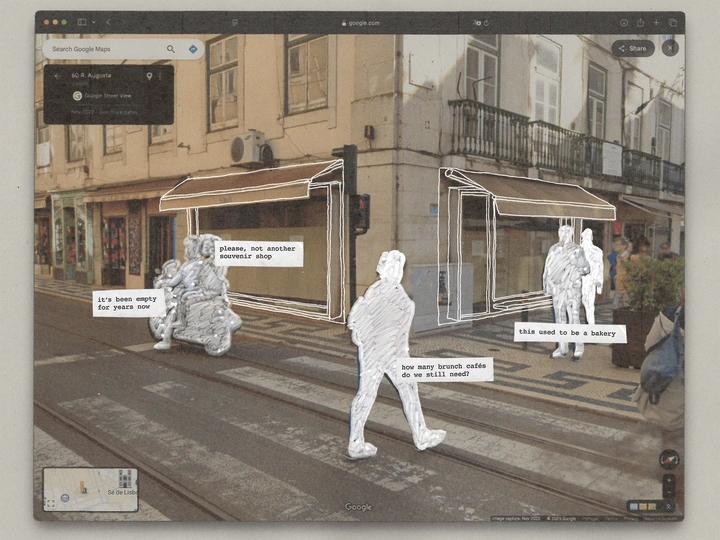Windows to neighbourhood dreaming

André Trindade
BY THE END OF MAY is a research and design practice exploring the roles of local making in creating a non-linear, post-consumerism and anti-alienation economy. In other words, we research, design, and prototype new ways of making things, taking advantage of what we already have inside our cities—natural resources, industrial by-products and urban waste—while enabling local makers and artisans to become the fundamental key players of a new distributed manufacturing system.
How can manufacturing companies rethink the production system for a new era of decentralisation in which cities and communities are more empowered and self-sufficient? What does it mean when you can open source not only code but also design, that you can download and reproduce locally? What are the qualities and values of traditional crafts, whose history built over centuries is now being forgotten, and how can we use digital tools to bring them back in?
The studio’s work began in 2021 with Post Paper Studio, a modular, low-tech system that transforms paper waste into construction and design material. Designed to be replicable and open-source, it has been shared with schools, makers, and communities through public workshops and manuals. In 2022, we initiated The Organic Laboratory, a spatial concept for neighbourhood-scale composting and biomaterial experimentation. With a pilot site planned in a Lisbon urban garden, it acts as a space for learning, making, and circularity—where everyday waste becomes a starting point for local regeneration. In 2023, we launched Gentler Futures, a long-term programme exploring design’s role in shaping alternative futures. Its first edition in May 2024 brought together over 30 contributors for a two-day festival of installations, workshops, and debates. The initiative continues through a podcast, a collaborative field guide, and guest lectures across Europe.
Neighbourhoods across Europe are being restructured around global capital, not local needs. Lisbon is no exception: storefronts once occupied by bakeries, butchers, or laundries now sit empty or are replaced by souvenir shops and multinational chains. What remains is a street-level monoculture designed for those who pass through, not those who stay. What if residents had a way to reclaim these spaces? To have their say in what a street should look like?
Imagine a platform that allows neighbours to map empty storefronts and collectively express what they feel is missing. A type of public inventory—part digital, part physical—where citizens can walk past a vacant shop, scan a code, and propose a use. Others can vote, add their own suggestions, or simply witness what is being asked for. Over time, each street accumulates a record of shared needs: a place to repair shoes, a print shop, a room for silence. These proposals can be practical or poetic, grounded or speculative.
Designed to be open-source and easily replicable, the tool would be first piloted in Lisbon, then made available for other contexts facing similar dynamics. Alongside the platform, we imagine a series of small public gatherings, like mapping walks (to spot vacant sites), neighbourhood informal assemblies (with casting ballots), and temporary guerrilla exhibitions (to visualise the street as imagined by the community).
At its core, the project wants to be a tool for spatial justice: a public platform with the goal to heal neighbourhoods damaged by speculative real estate. Each mapped storefront then becomes a canvas for civic expression, local governance, and above all, collective imagination. As more data is gathered, emerging patterns (and dreams) begin to take shape. These can be used by municipalities, associations, or independent shopkeepers, to fight tourist-driven retail monocultures and foster small, place-based economies. And to start reclaiming space—one empty storefront at a time.